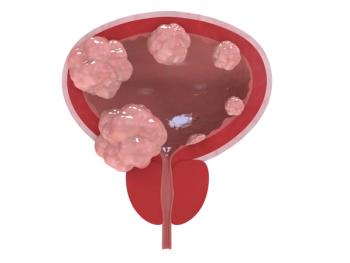
Oncology NEWS International
- Oncology NEWS International Vol 9 No 9
- Volume 9
- Issue 9
Potential Benefits of Encapsulating Paclitaxel
PHILADELPHIA-Encapsulating paclitaxel (Taxol) in liposomes almost eliminates nonhematologic toxicities such as neuropathy and greatly prolongs the drug’s half-life, Joseph Treat, MD, reported at the clinical investigators’ workshop. Dr. Treat is Vice Chairman of the Department of Medical Oncology at Fox Chase Cancer Center and Medical Director of the Temple University Cancer Center in Philadelphia. The workshop was sponsored by the University of Texas M.D. Anderson Cancer Center and by Pharmacia Oncology.
PHILADELPHIAEncapsulating paclitaxel (Taxol) in liposomes almost eliminates nonhematologic toxicities such as neuropathy and greatly prolongs the drugs half-life, Joseph Treat, MD, reported at the clinical investigators workshop. Dr. Treat is Vice Chairman of the Department of Medical Oncology at Fox Chase Cancer Center and Medical Director of the Temple University Cancer Center in Philadelphia. The workshop was sponsored by the University of Texas M.D. Anderson Cancer Center and by Pharmacia Oncology.
Paclitaxel is poorly soluble, and the usual formulation requires Cremophor for human administration, Dr. Treat said. Potential advantages of liposomal encapsulated paclitaxel include elimination of toxicities related to Cremophor, reduction of infusion time, and preservation of the anti-tumor effect while reducing side effects such as neurotoxicity, myalgia, arthralgia, and alopecia.
Improved Toxicity Profile
Dr. Treat discussed a phase I trial of liposomal encapsulated paclitaxel (LEP). At the recommended phase II dose of 175 mg/m², the main toxicity was grade 3-4 neutropenia, which Dr. Treat pointed out is also a problem with conventional paclitaxel. There was minimal alopecia at this level. Higher doses caused unacceptable levels of mucositis and neutropenia. There were no significant neurotoxicities seen at any of the doses tested, Dr. Treat said. The toxicity profile is quite different from conventional paclitaxel. The elimination of Cremophor also means that this formulation has linear pharmacokinetics and a prolonged terminal half-life of about 38 hours.
Preliminary efficacy data showed two partial responses among the 30 patients in the phase I trial: one with nonsmall-cell lung cancer and one with breast cancer with liver and soft-tissue metastases.
Articles in this issue
over 25 years ago
Soy’s Effect on Breast Cancer Remains Uncertainover 25 years ago
STAR Enrollment Tops 6,000 in First Year of Recruitmentover 25 years ago
New rhTPO Being Tested in Three Trialsover 25 years ago
New Research Centers Target How Market Forces Affect Health Careover 25 years ago
PRIMATOM System Combines CT Scanning With Radiation TherapyNewsletter
Stay up to date on recent advances in the multidisciplinary approach to cancer.
















































































